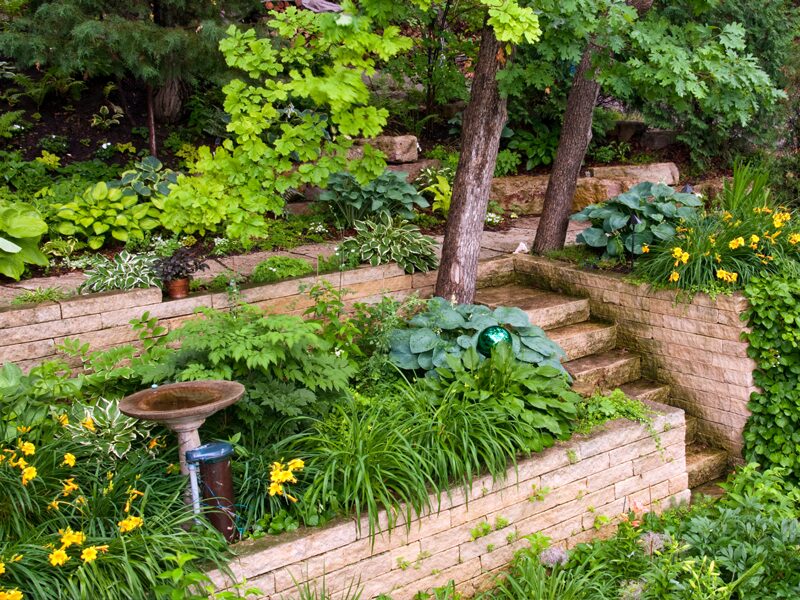Blog
Choosing the Best Retaining Wall Block for Strength & Style
Retaining walls are essential hardscape features that not only provide structural support to prevent soil erosion but also enhance the aesthetic appeal of outdoor spaces. Selecting the appropriate retaining wall blocks is crucial to ensure both strength and style, harmonizing with the overall landscape design.
Understanding Retaining Wall Types

Retaining walls come in various types, each serving specific functions and offering distinct visual characteristics:
- Gravity Walls: These rely on their substantial weight to hold back soil. Materials like stone, concrete, or other heavy substances are commonly used. Their straightforward design makes them suitable for shorter walls.
- Cantilevered Walls: Constructed from steel-reinforced concrete or mortared masonry, these walls utilize an internal stem and footing to convert horizontal pressure from the soil into vertical pressure on the ground. This design is efficient for medium to tall walls.
- Anchored Walls: These walls gain additional strength through cables or stays anchored into the rock or soil behind them, making them ideal for supporting heavy loads or when a slender wall design is desired.
Materials Matter: Choosing the Right Blocks
The material of the retaining wall blocks significantly influences both the wall’s durability and its integration into the landscape’s aesthetics:
- Concrete Blocks: Known for their strength and versatility, concrete blocks can be molded into various shapes and sizes, allowing for diverse design possibilities. They are durable and can be engineered to meet specific structural requirements.
- Natural Stone: Offering a timeless and organic look, natural stone blends seamlessly into outdoor environments. While aesthetically pleasing, it’s essential to ensure the stones are appropriately sized and installed to maintain structural integrity.
- Brick: For a classic and uniform appearance, bricks are an excellent choice. They provide a clean look and can be used to complement existing structures. However, proper drainage must be ensured to prevent water accumulation behind the wall.
Design Considerations for Visual Interest

Beyond functionality, retaining walls can serve as focal points in landscape design:
- Incorporate Curves: Curved walls not only add visual interest but also enhance structural strength. They can guide the flow of the landscape, creating inviting spaces.
- Varying Textures and Patterns: Using blocks with different textures or laying patterns can add depth and character to the wall, making it a standout feature.
- Tiered Walls: Building tiered retaining walls allows for the creation of terraced gardens, adding dimension and usability to sloped areas.
Integrating Wall Systems into Your Landscape
A well-designed retaining wall should complement and enhance the existing outdoor space:
- Harmonize with Existing Elements: Ensure the color, texture, and style of the wall blocks align with other hardscape elements like patios, walkways, or the home’s facade.
- Incorporate Greenery: Planting along the top or within the wall (using planters or gaps) softens the structure and integrates it into the natural landscape.
- Lighting: Installing lighting along the wall can highlight its design and improve safety during evening hours.
Choosing the best retaining wall block involves balancing structural needs with aesthetic desires. By understanding the types of walls, selecting appropriate materials, and thoughtfully integrating design elements, you can create a retaining wall that is both strong and stylish, adding lasting value and beauty to your outdoor space.